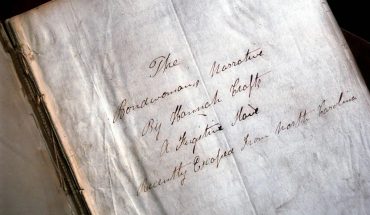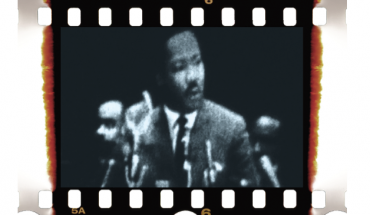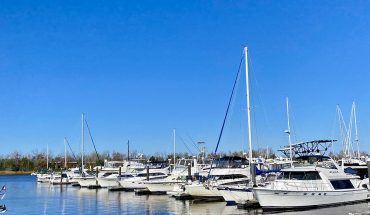North Carolina native Ernest Dollar turned a love for history and the Triangle into a full-time job.
by Catherine Currin | photography by Travis Long
Bump into Ernest Dollar, and he’ll gladly share a gem from almost a decade of studying our city. As the Executive Director of both the City of Raleigh (COR) Museum on Fayetteville Street and the Pope House Museum on S. Wilmington Street, Dollar hopes to teach us more about our shared, surprising history. We caught up with him to learn about his love for all things Raleigh.
TELL ME A LITTLE BIT ABOUT YOUR BACKGROUND.
I’m a Durham native, been in the Triangle all my life. I attended The University of North Carolina at Greensboro, where I was originally a design major. But I got bit by the history bug my junior year of college—I later went on to grad school to pursue that interest. I worked in historical preservation until I landed my first director job in 2001, at the Orange County Historical Museum in Hillsborough, N.C. The museum there was started in 1956, but it was the first time they were looking for a director. I had never thought about working in a museum, but once I got the job, I fell in love and never looked back. Museums are where art and history meet, through design exhibits. I went back to school at North Carolina State University to study Public History and graduated in 2006. It’s a real niche field, but with a basic question: how do we teach the public about history? I was one of the first few hires at the COR Museum and the Pope House when the City took over.
HOW DID THAT COME ABOUT?
The Raleigh City Museum, as it was originally called, was a private museum founded in 1993—right after Raleigh’s bicentennial—that operated as a nonprofit. It was in danger of closing before the City of Raleigh took it over in 2012, and I came on board shortly after. The Pope House had never even been a museum. After that, the city renamed the Parks and Recreation Department as the Parks, Recreation and Cultural Resources Department. They formed the Historic Resources and Museum Program, which is the group that manages the city’s historic facilities. Since the museum and Pope House are near each other, I oversee both sites. To be a part of this is very rewarding work.
WHY IS RALEIGH SO SPECIAL TO YOU?
The exciting thing is that Raleigh is the state capital. To tell the story of the political center of North Carolina is a big deal. I was very excited to come to the big city and tell its history. Raleigh has a nice, polished exterior history: state capital, government town, business town. Past that, I didn’t know much. It’s taken me eight or nine years to get into the corners of Raleigh’s past. A lot of my research was driven by the community, people who inspired me to dig in and learn more.
WHAT’S MOST INTERESTING ABOUT RALEIGH?
Much of the historic background I’ve personally studied is the 19th century. I certainly think the Civil War is pretty important and relevant to today—just open a newspaper! People don’t realize that Raleigh was almost completely destroyed. There was a giant earthen wall built around the entire city, and one Union general, John A. “Black Jack” Logan, saved the city from being burnt down.
Raleigh has such a rich African-American history as well—Dr. Pope was one of the first African-American doctors in North Carolina, which is why his home is a museum now. It tells the story of North Carolina’s first licensed black doctors. There are stories in the African-American community that are disappearing—we have to capture them before they’re gone. For example, we have a literacy test from October 10, 1964. This was donated to us from the Wake County Board of Elections and shows the lengths that were taken to disqualify voters, especially African Americans. Potential voters had to copy phrases from the Constitution to prove they could read and write. The use of literacy tests was made illegal by the passage of the Voting Rights Act passed on August 6, 1965.
The deeper I dig, the more I find. Did you know that even though Raleigh is named after English explorer Sir Walter Raleigh, he never set foot anywhere in the New World? I’ve been able to see the way neighborhoods have changed—Transfer Food Hall now sits in the heart of Raleigh’s turn-of-the-century Red Light District. If you’re interested in some really morbid stories of the Capital City, we offer our Dark Raleigh walking tour in October. Rather than ghosts, we explore true death and crime stories from Raleigh’s past.
WHAT CAN YOU LEARN AT THE COR MUSEUM?
There’s a lot more to Raleigh than being a government town. An incredible community has lived here for over 200 years. The past is an incredible place to visit and it’s still with us today. This is the whole architecture of everything we do at the museum: our motto is ‘Then, Now, Next.’ We want to keep up with the pace and the pulse of the city by curating exhibits that showcase how Raleigh’s history will shape our future.
SPEAKING OF YOUR MOTTO… WHAT’S NEXT?
This year is the 100th anniversary of the 19th amendment. We are celebrating what women in North Carolina did when they got the right to vote with From Mothers to Mayors: The Legacy of the 19th Amendment. It takes a look at the next century of political activism by women in Raleigh. I have many favorite artifacts, but one is a staple gun used by Betty Ann Knudsen. She was a Wake County Commissioner in 1976 and became the first female to chair the board; she was a powerhouse in organizing and promoting female candidates. She helped get Raleigh’s first female mayor elected in 1977. This simple staple gun helped make big changes.




